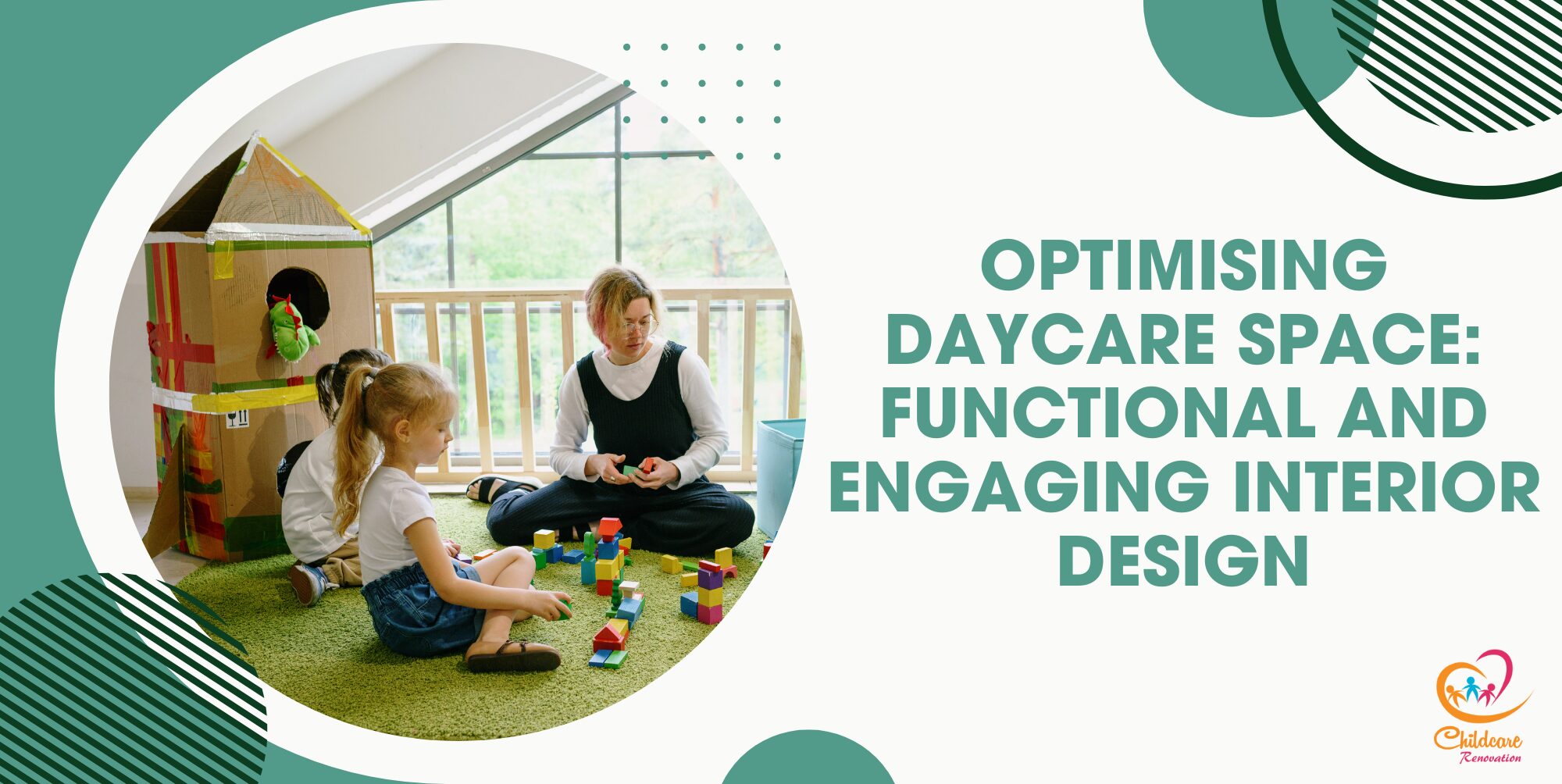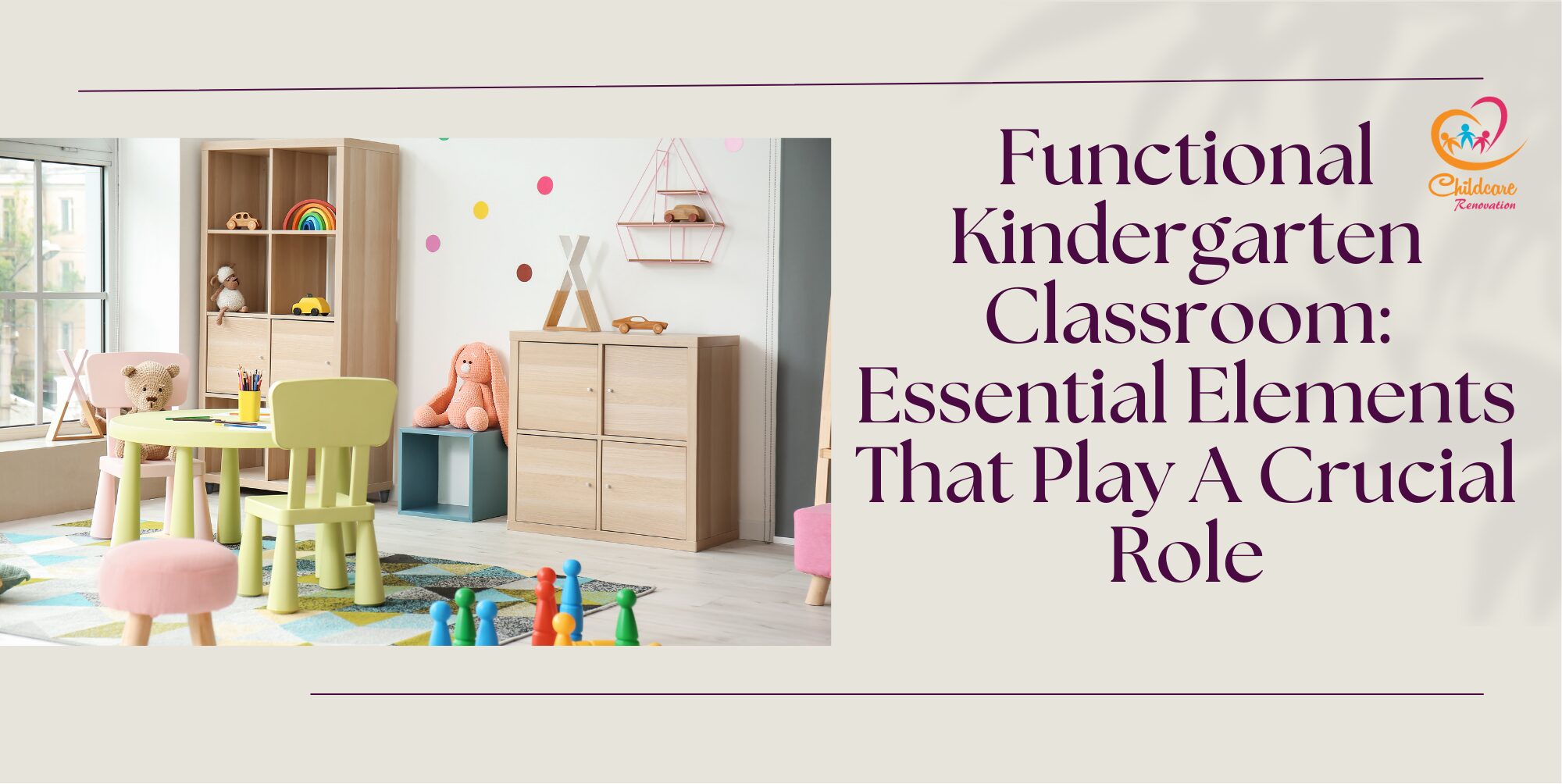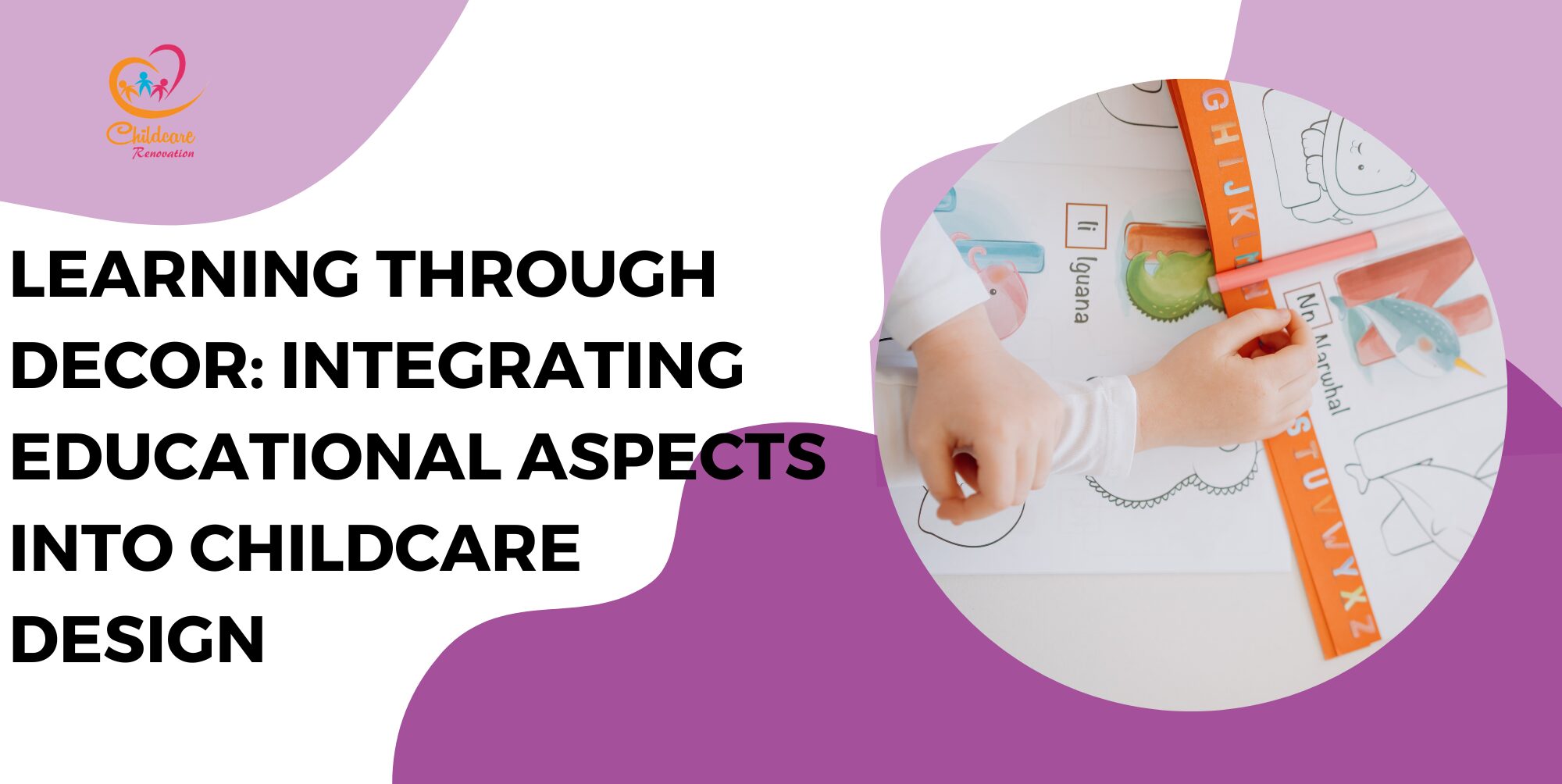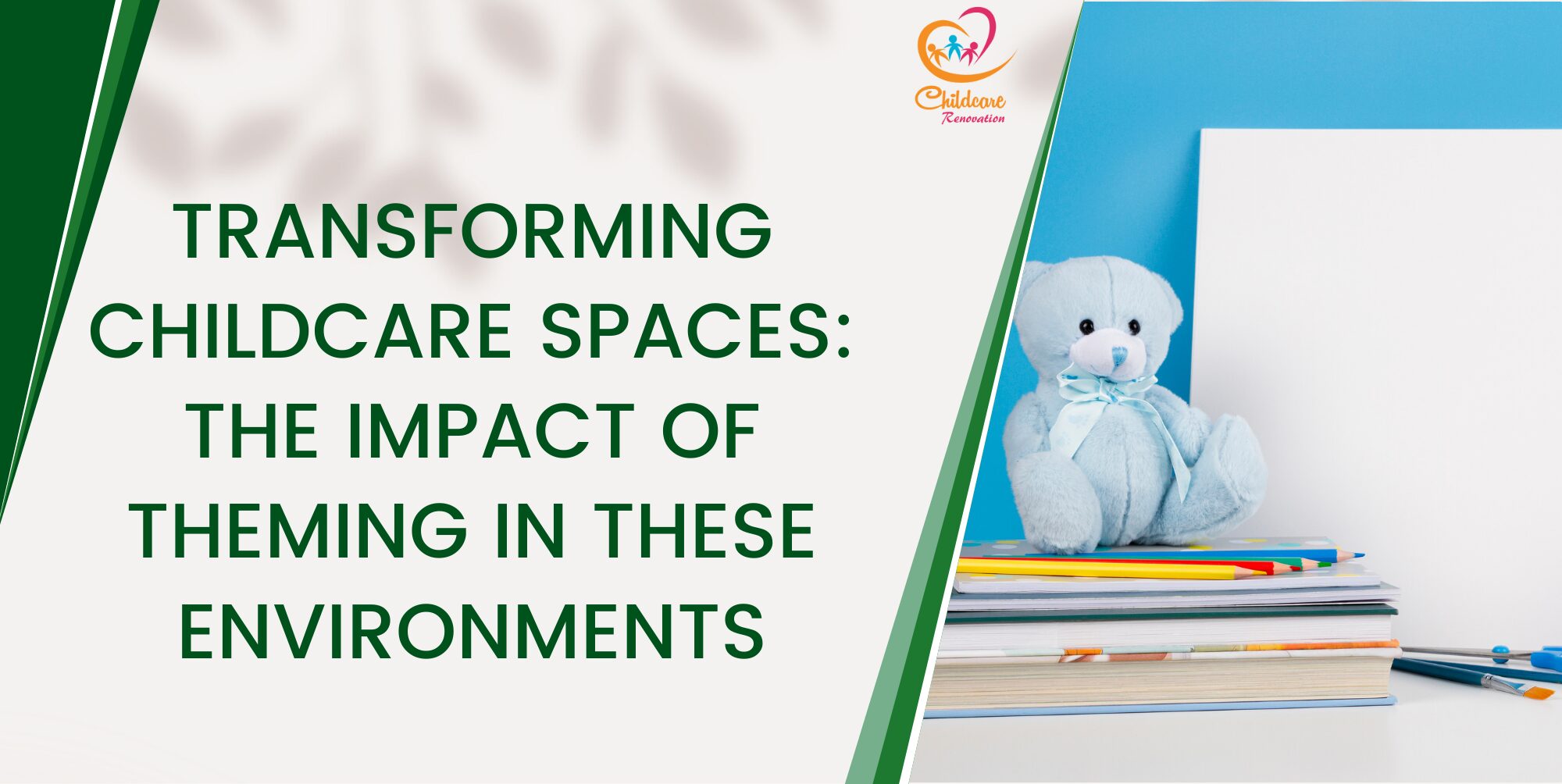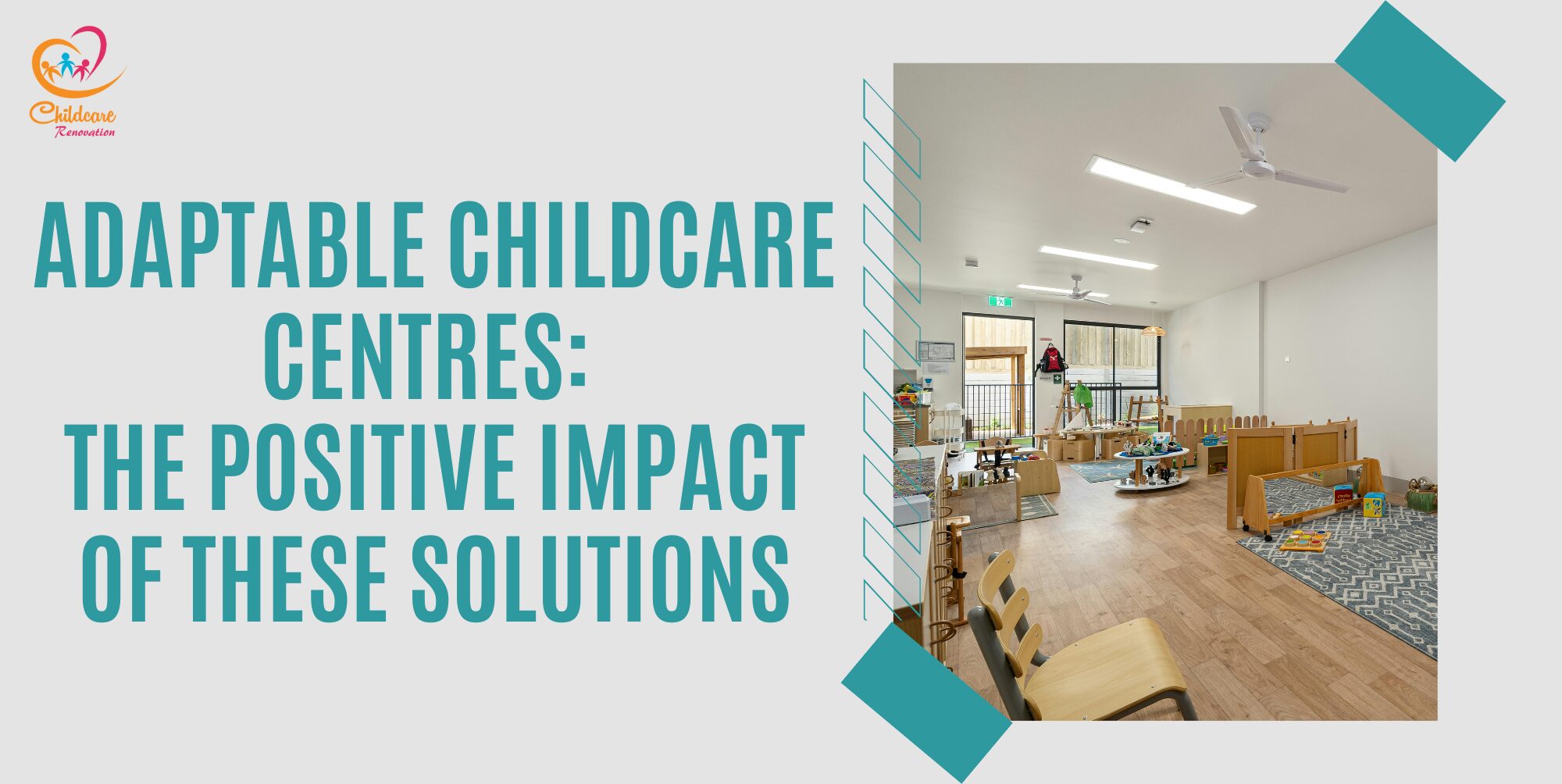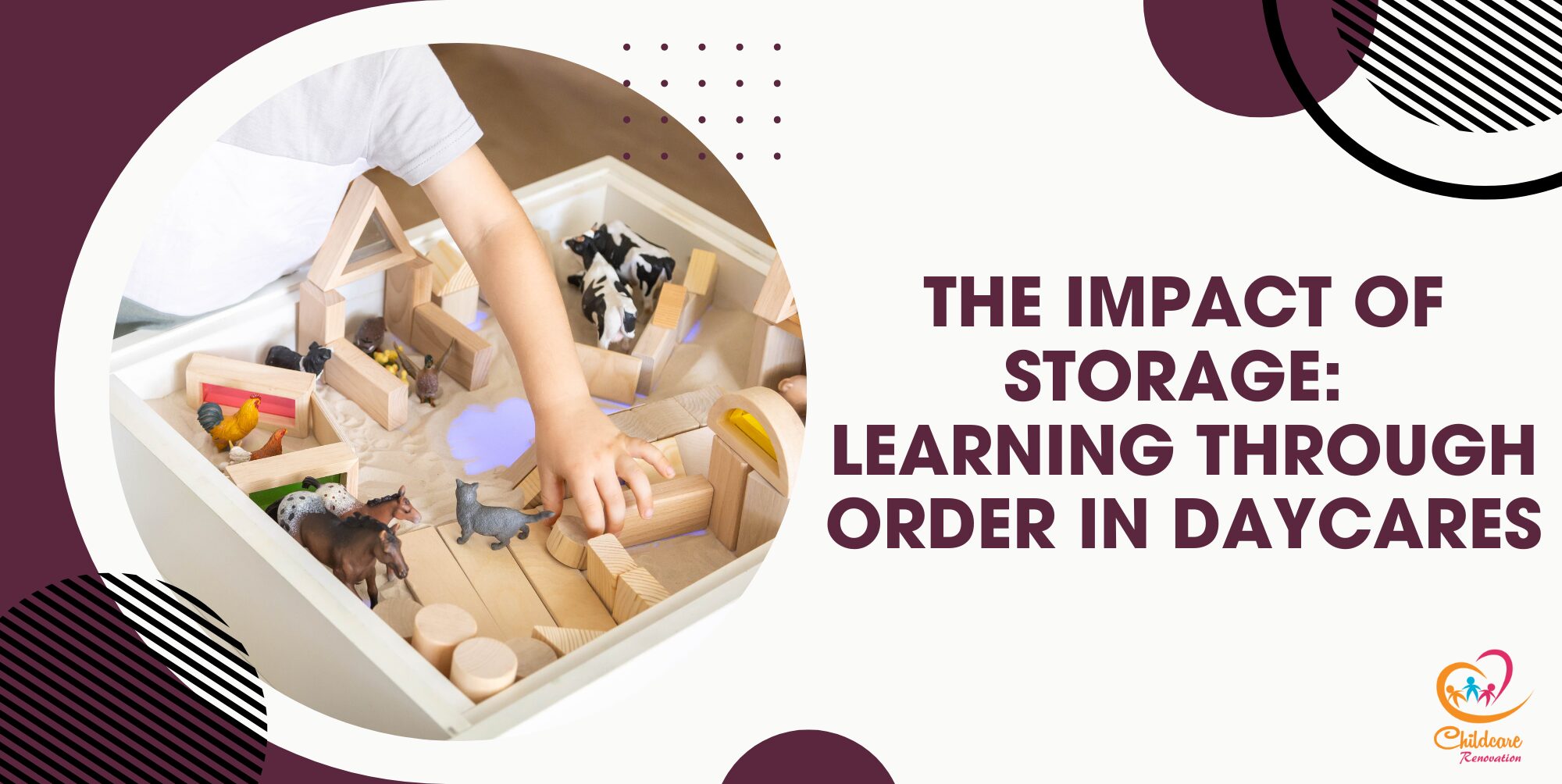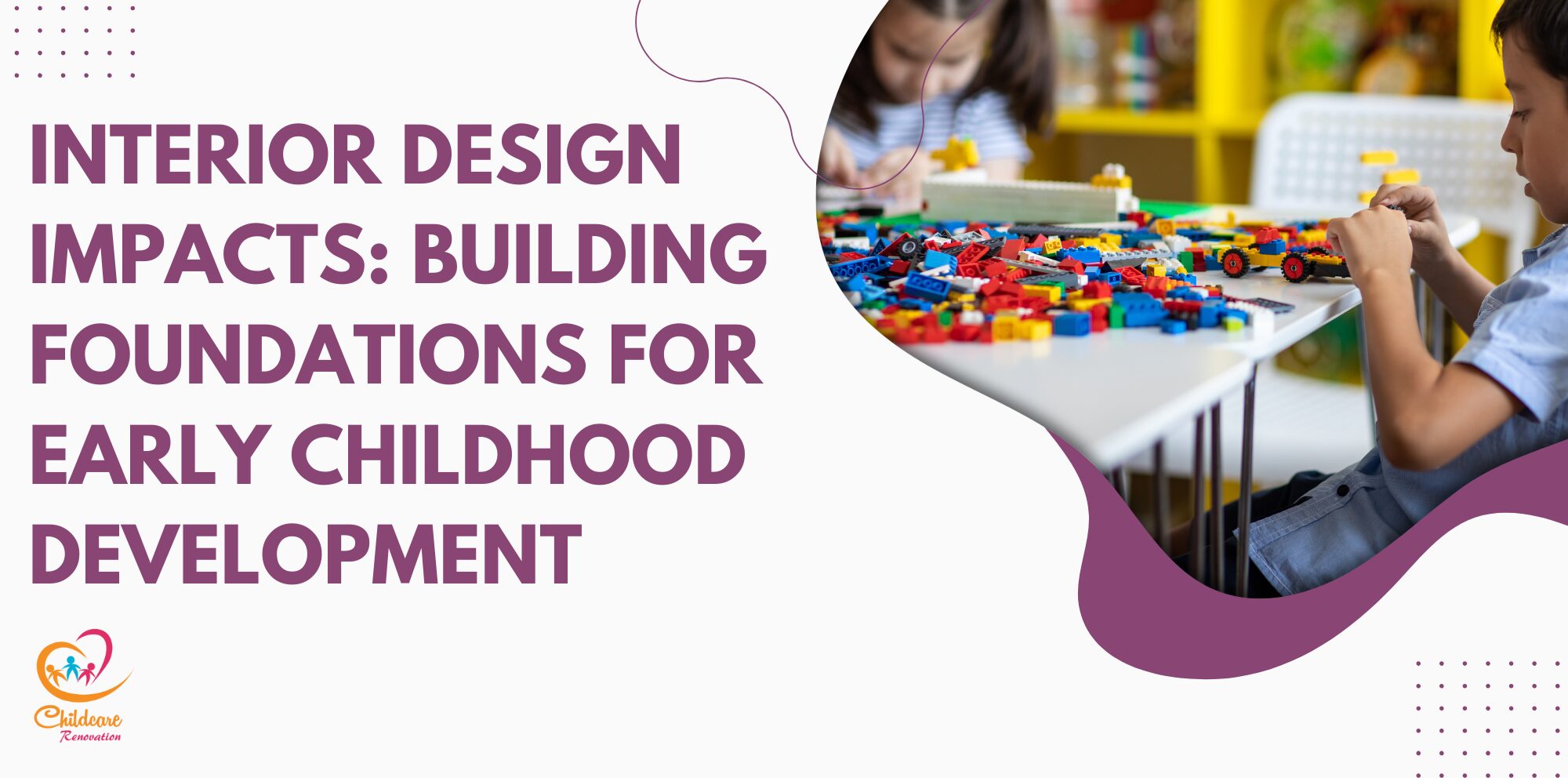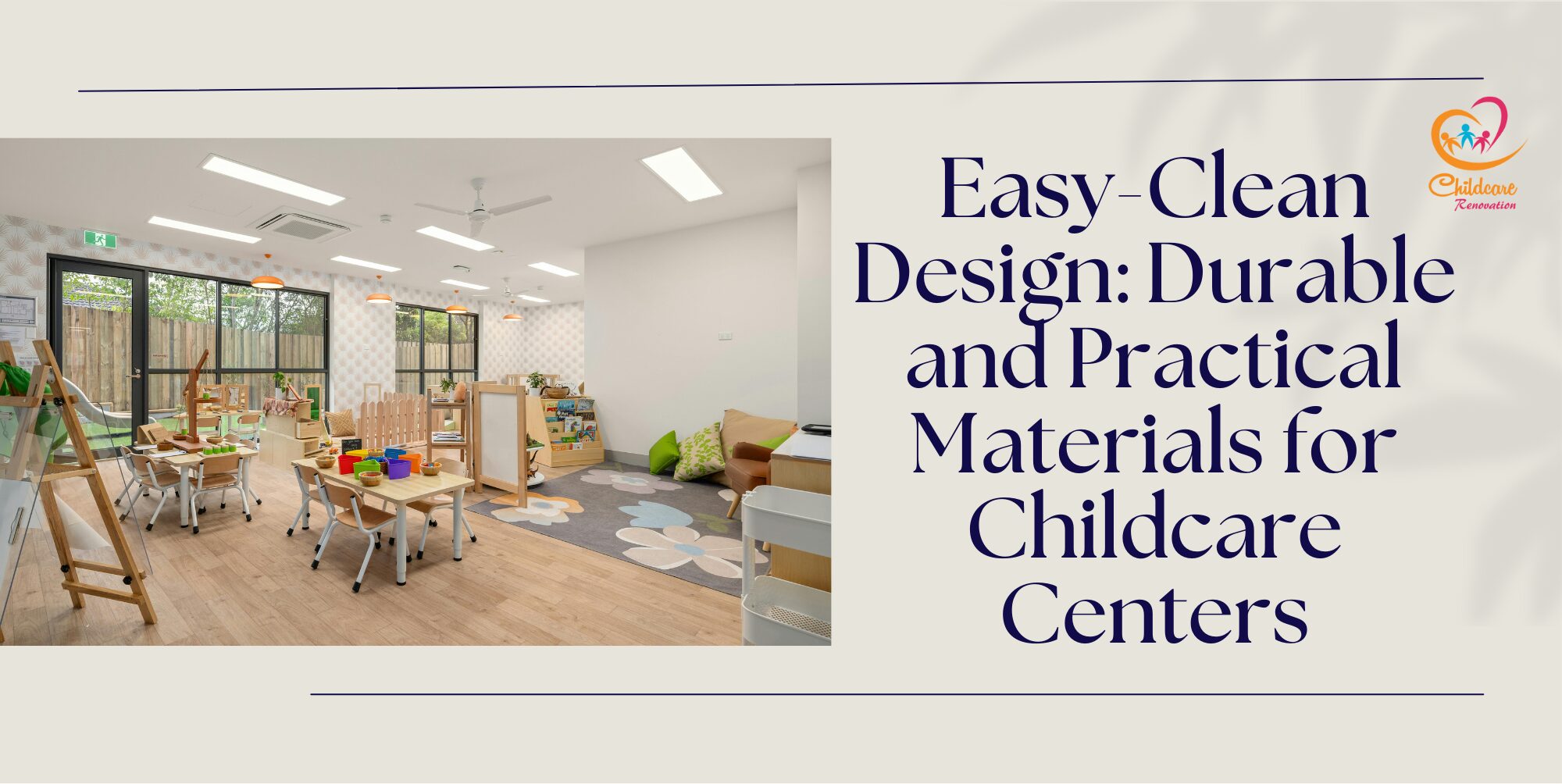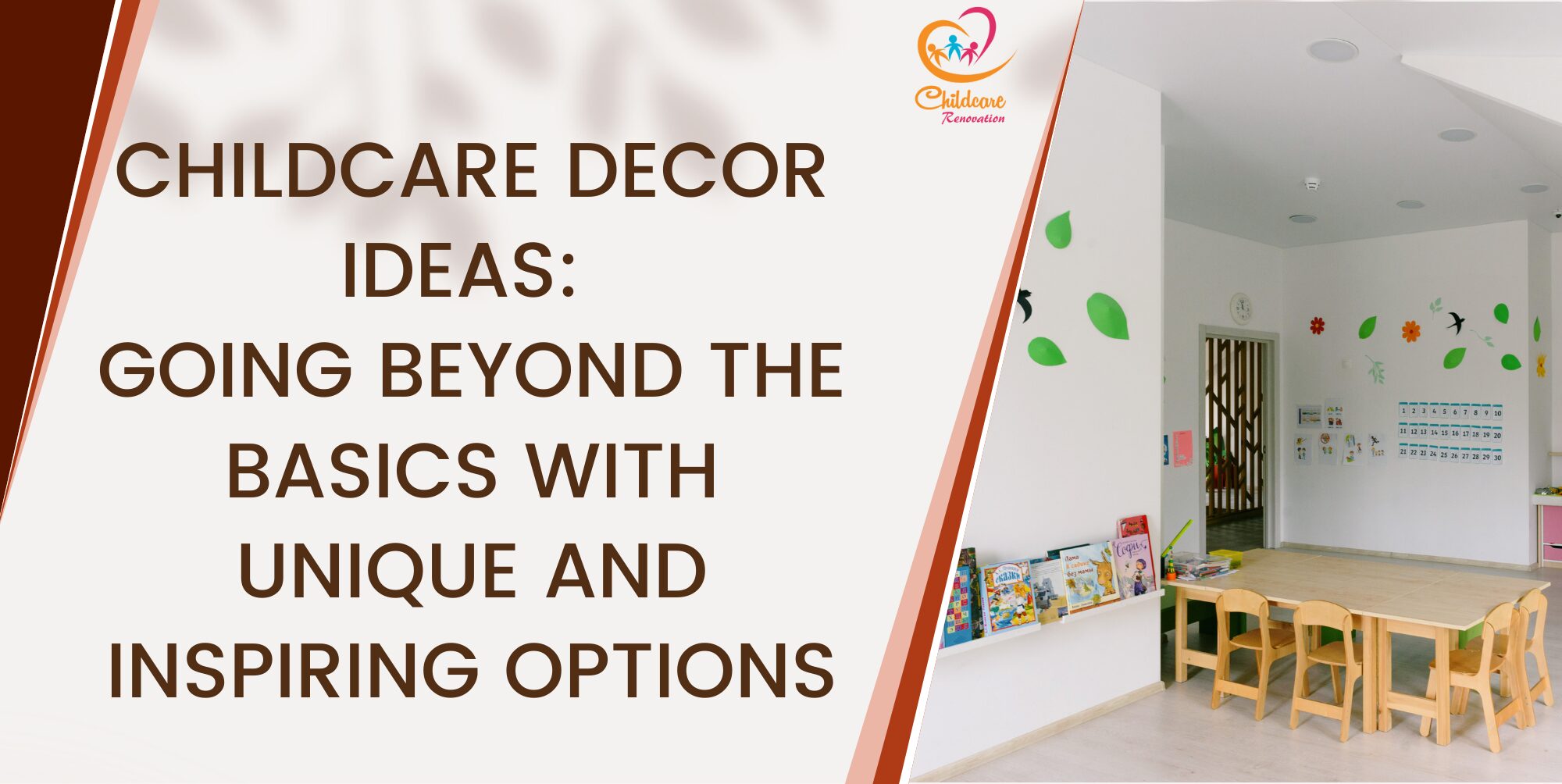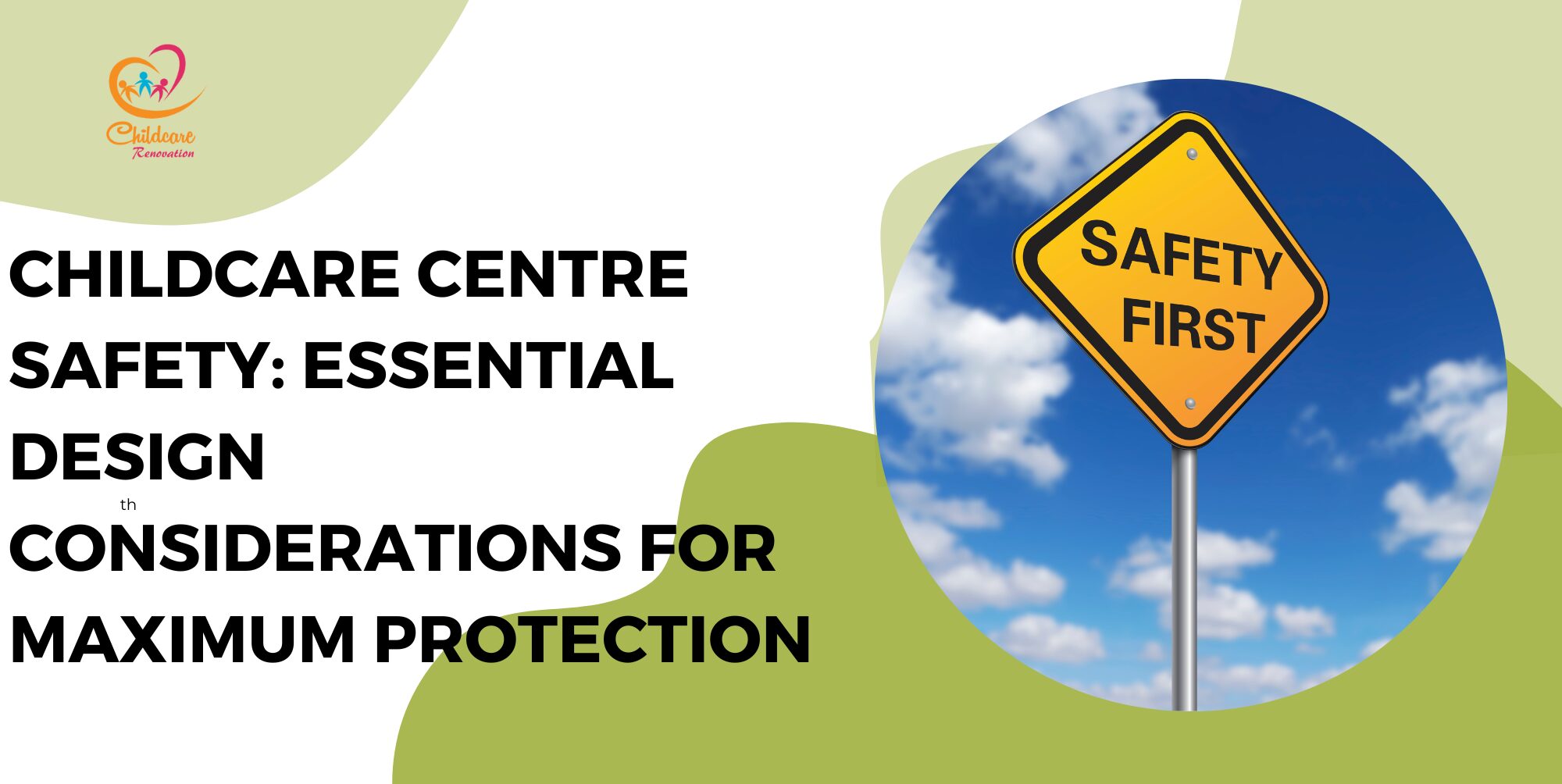Eco friendly and sustainable methods can easily be incorporated when decorating and designing a childcare centre. There are many elements and aspects that can be incorporated when intending to create a eco-friendly vibe in the establishment. Here are 5 key ways to create a sustainable daycare setting.
Eco Friendly Tip 1 : Natural Materials

Image Credit: Canva
Using natural materials in daycare centres is an effective way to create an eco-friendly environment that promotes the health and well-being of children. Natural materials such as wood, bamboo, cotton and wool are sustainable, non-toxic and biodegradable which makes them ideal choices for an eco-conscious daycare setting.
Furniture made from sustainably sourced wood or bamboo is durable and free from harmful chemicals often found in plastic alternatives. Wooden tables, chairs and shelving units not only enhance the aesthetic appeal of the space with their warm and natural tones but also provide a safer environment for children. Additionally, textiles used in daycare centres can significantly impact the indoor environment. Choosing cotton, linen and wool for items such as rugs, curtains and upholstery ensures that children are exposed to fewer synthetic fibres. These natural fibres are not only comfortable and breathable but also hypoallergenic, which is key in reducing the risk of allergic reactions among young children.
Flooring is another critical area where natural materials can make a difference. Cork and bamboo flooring are excellent choices for daycare centres. Cork is soft which is helpful in providing a cushioned surface for play and it is also biodegradable. Bamboo, known for its rapid growth and sustainability, offers a durable and easy-to-clean flooring option. Apart from that, incorporating indoor plants can further enhance the eco-friendliness of the daycare environment. Plants improve air quality by absorbing carbon dioxide and releasing oxygen; therefore, creating a healthier indoor atmosphere.
In conclusion, using natural materials in daycare centres not only supports environmental sustainability but also fosters a healthier and more nurturing environment for children. By prioritising materials that are safe, renewable and aesthetically pleasing, daycare providers can create spaces that benefit both the planet and the young children.
Eco Friendly Tip 2 : Recycled and Up-cycled Decor

Image Credit: Canva
Incorporating recycled decor in daycare centres is a significant way to promote sustainability while creating a unique and engaging environment for children. Recycled materials not only reduce waste but also inspire creativity and environmental awareness among young learners.
One of the primary advantages of using recycled decor is the reduction of environmental impact. By repurposing materials such as reclaimed wood, recycled metal and repurposed plastics, daycare centres can significantly decrease their carbon footprint. For instance, furniture made from reclaimed wood not only diverts waste from landfills but also adds a rustic charm to the interior. These pieces can be interesting and attractive; thus, making them conversation starters and educational tools for teaching children about recycling and sustainability.
Up-cycled decor items such as furniture and art made from old pallets, tires or fabric scraps can add an imaginative touch to a daycare space. These items demonstrate resourcefulness and creativity which can be especially helpful in showing children how everyday objects can be transformed into something new and useful. Engaging children in up-cycling projects can also be an educational activity; thus, fostering their creativity and environmental consciousness.
Recycled paper and cardboard can be used for various purposes in daycare decor. For example, bulletin boards, storage boxes and art supplies can all be made from recycled paper products. Using these materials helps conserve natural resources and energy that may have been used in the production of new paper products. Decor items made from recycled glass or plastic bottles can serve both functional and decorative purposes. Glass bottles can be transformed into colourful vases or hanging decorations, while plastic bottles can be cut and painted to create storage containers or planters.
In conclusion, incorporating recycled decor in daycare centres not only supports environmental sustainability but also creates a stimulating and educational environment for children. By showcasing the beauty and utility of recycled materials, daycare providers can inspire a new generation to value and practice sustainability in their everyday lives.
Eco Friendly Tip 3 : Eco Friendly Storage Materials

Image Credit: Canva
Implementing eco-friendly storage solutions in daycare centres is an effective way to promote sustainability while maintaining a tidy and organised environment for children. Utilising sustainable materials and thoughtful design, these storage solutions contribute to a healthier and more environmentally conscious daycare setting.
One of the primary considerations for eco-friendly storage is the choice of materials. Opting for storage units made from sustainably sourced wood, bamboo or recycled materials ensures that the furniture is both durable and environmentally responsible. Wooden shelves and cabinets finished with natural oils and waxes rather than chemical based varnishes will be seen as safe and non-toxic storage options. Bamboo which is known for its rapid growth and renewability is another excellent material for eco-friendly storage furniture.
Recycled and repurposed materials can also play a significant role in creating sustainable storage solutions. Storage bins and boxes made from recycled plastic or reclaimed wood not only reduce waste but also add a unique and rustic charm to the daycare space. Using items such as repurposed crates or pallets for storage can demonstrate creativity and resourcefulness which teaches children the value of reusing materials.
Natural fibre baskets made from materials like wicker, seagrass, or jute offer versatile and aesthetically pleasing storage options. These baskets are biodegradable, lightweight and easy to move around, making them ideal for organising toys, books and art supplies. Additionally, they add a warm and natural element to the decor. Multipurpose furniture can further enhance the eco-friendliness of a daycare’s storage solutions. For example, benches with built-in storage or stackable units that can be rearranged as needed provide flexible and space-saving options. This reduces the need for multiple pieces of furniture; thereby, conserving resources and minimising waste.
In conclusion, eco-friendly storage solutions in daycare centres not only support environmental sustainability but also create an organised and inviting space for children. By choosing sustainable materials, repurposing items and utilising versatile designs, daycare providers can effectively combine functionality with eco-conscious practices; hence, setting a positive example for young learners.
Eco Friendly Tip 4 : Green Plants

Image Credit: Canva
Incorporating green plants into daycare centres is a powerful way to create an eco-friendly environment that promotes health, well-being and environmental awareness among young children. Green plants offer numerous benefits, from improving air quality to enhancing the aesthetic appeal of the space, making them a valuable addition to any daycare setting.
One of the most significant advantages of having green plants in a daycare is their ability to improve indoor air quality. Plants naturally filter and purify the air by absorbing carbon dioxide and releasing oxygen. Additionally, they can remove harmful toxins and pollutants from the air commonly found in indoor environments. This leads to a healthier atmosphere for children; hence, reducing the risk of respiratory issues and allergies.
Green plants also contribute to a calming and stress-reducing environment. The presence of plants has been shown to lower stress levels, enhance mood and increase overall well-being. For children in daycare, this can create a more relaxed and positive learning environment, which can be useful in supporting their emotional and psychological development from a young age. Incorporating plants as decor into the childcare setting can also provide educational opportunities. Children can learn about different plant species, their growth cycles and the importance of caring for living things. Activities such as planting seeds, watering plants and observing their growth can foster a sense of responsibility and connection to nature.
When selecting plants for a daycare, it is important to choose child-safe varieties. Some excellent options include spider plants, Boston ferns, rubber plants and peace lilies. These plants are not only safe for children but also relatively easy to care for; thus, making them ideal for busy daycare environments. Creating green walls or vertical gardens can maximise the use of space while adding a lush and vibrant element to the decor. These installations can serve as living art pieces which in turn aids in bringing the beauty of nature indoors.
In conclusion, incorporating green plants into daycare centres offers numerous benefits ranging from improving air quality and reducing stress to providing educational opportunities and enhancing the aesthetic appeal. By integrating plants into the daycare environment, caretakers can create a healthier, engaging and eco-friendly space for children to learn and grow.
Eco Friendly Tip 5 : Water Conservation Elements

Image Credit: Canva
Implementing water conservation measures in daycare centres is a vital component of creating an eco-friendly environment that promotes sustainability and resourcefulness. Effective water management not only helps to reduce the environmental footprint of the facility but also teaches children the importance of conserving this precious resource.
One of the most straightforward ways to conserve water in daycare centres is by installing low-flow fixtures. Low-flow faucets, toilets and shower heads significantly reduce water consumption without compromising performance. These fixtures use less water when in use which can lead to substantial savings in water bills and a reduction in overall water usage. Additionally, rainwater harvesting is another effective way to conserve water. By collecting and storing rainwater, daycare centres can use this water for various purposes such as watering plants, cleaning outdoor play areas and flushing toilets. Installing rain barrels can capture a significant amount of rainwater which is beneficial in reducing the reliance on main water supplies and promotes sustainable water use.
Drip irrigation systems for outdoor plants and gardens can also contribute to water conservation. These systems deliver water directly to the roots of plants and minimises water loss and wastage due to evaporation and runoff. Educating children about water conservation is equally important. Simple practices such as turning off the tap while washing hands, using a cup when brushing teeth and reporting any leaks or drips can instil a sense of responsibility towards water usage.
Interactive activities and lessons on the water cycle, the importance of water in daily life and ways to save water can reinforce these habits. Fixing leaks promptly is another essential aspect of water conservation. Even minor leaks can lead to significant water wastage over time. Regular maintenance checks and immediate repairs can prevent unnecessary water loss.
In conclusion, incorporating water conservation measures in daycare centres is crucial for promoting sustainability and environmental stewardship. By using low-flow fixtures, rainwater harvesting systems, drip irrigation and educating children about water-saving practices, daycare centres can significantly reduce their water usage and teach future generations the importance of conserving this vital resource.
Speak with The Experts
Planning to get started at your kindergarten but have no idea about it?
Childcare Center Renovation Singapore is a reliable company for renovation and interior design. They have about ten years of experience in this field and have a good reputation among customers.
Call us now to get your desired kindergarten design ideas now!



